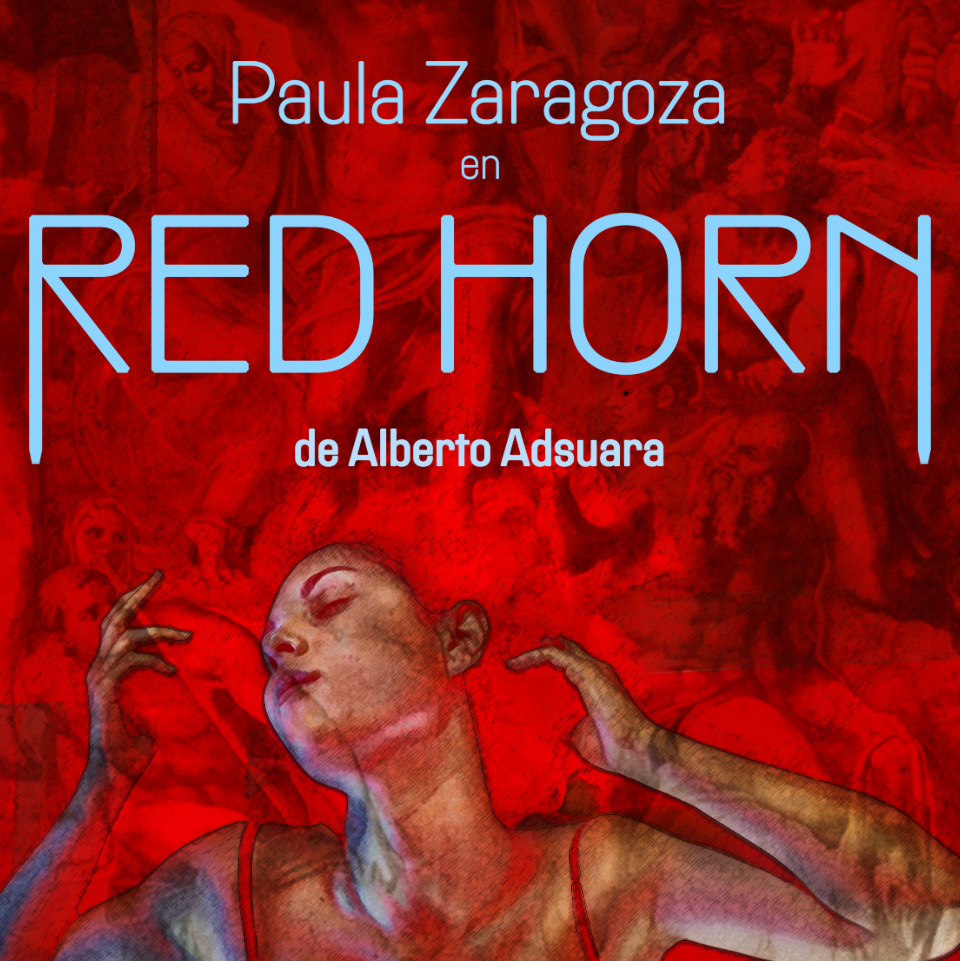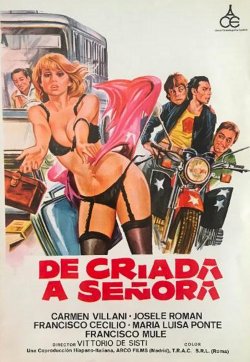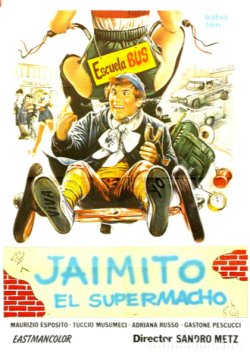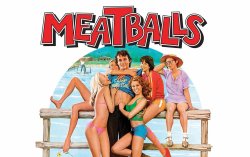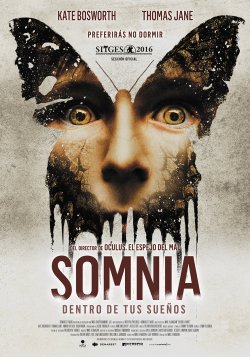 |
|
SINOPSIS
La pareja formada por Jessie y Mark deciden adoptar a un chico de ocho años, el cual siente pavor cada vez que debe dormir. Al principio la pareja lo achaca a la inestabilidad que ha estado sufriendo el chico pero pronto descubren que los sueños del niño se hacen realidad mientras duerme...
INTÉRPRETES
JAKCB TREMBLAY, KATE BOSWORTH, THOMAS JANE, ANNABETH GISH, SCOTTIE THOMPSON, DASH MIHOK, JAY KARNES, KYLA DEAVER, LANCE E. NICHOLS, HUNTER WENZEL, COURTNEY BELL, AURORA BLUE
MÁS INFORMACIÓN DE INTERÉS
![]() BSO
BSO
![]() CLIPS
CLIPS
![]() CÓMO SE HIZO
CÓMO SE HIZO
![]() VIDEO ENTREVISTAS
VIDEO ENTREVISTAS
![]() PREMIERE
PREMIERE
 GALERÍA DE FOTOS
GALERÍA DE FOTOS
https://www.cineymax.es/estrenos/fichas/101-b/101953-before-i-wake-somnia-dentro-de-tus-suenos-2016#sigProId053002272a
 INFORMACIÓN EXCLUSIVA
INFORMACIÓN EXCLUSIVA
ABOUT THE STORY...
Somnia, which exists in a world with supernatural elements while maintaining a strong foothold in reality, begins as a story about parents trying to reconcile the loss of a child, and ends as a story about a child reconciling the loss of a parent.
Jessie and Mark’s irresistible longing to see their dead son, Sean, again, even when they know he isn’t real, drives the narrative. In the hope of manipulating his dreams and bringing Sean back to life, Jessie goes so far as to medicate Cody to ensure he slumbers and dreams. However, they soon discover it is not just Cody’s pleasant dreams that manifest but that as he sleeps his nightmares also awaken.
“The horror of Somnia is born of the souls of its characters,” says Director/Co-writer/Editor Mike Flanagan. “This is really a bedtime story for grownups complete with its own boogie man.”
The idea of using a new child as a surrogate for the memory of a lost child is handled with haunting, unflinching honesty.
The terrifying elements in the film, particularly Canker Man, embody the ideas of loss and serve to take away loved ones, to devour them whole, leaving no trace of them outside of a memory.
Somnia counterbalances the dark horrors with powerful themes of forgiveness, parental love, and the idea that understanding the root of our fear allows us to conquer it and remove its power.
“We are continually observing changes in demands and taste of the movie going audience. Most recently, what we are seeing is that audiences are demanding a more sophisticated, higher-quality element to genre films - so the term “elevated genre” has emerged. Character development, emotional resonance and dramatic integrity set these elevated films apart from others in their genre,” explains Producer Trevor Macy.
“Horror doesn’t just have to be about gore, violence, torture and a group of teenagers being led to their slaughter. It can use the supernatural aspects of the genre to explore complex, universal, and sometimes uncomfortable truths about human nature while still delivering memorable and thrilling scares,” adds Executive Producer Scott Lumpkin, who describes Somnia as a cerebral thriller. “As with his previous work Oculus, Flanagan takes Somnia to the next level. He has written a fable about loss, love, and death and he punctuates that story on screen with sequences of intense, visceral terror that only a child’s mind can conjure.
The story was created by writing partners Flanagan and Jeff Howard who went to Baltimore’s Towson University, about six years apart. The duo, who has been writing together for about 13 years, was introduced by a mutual friend.
For the original concept the writing partners were trying to come up with some never before seen horror elements when Flanagan explains that we realized that “with their imaginary friends and make-believe boogie men, no one is a better horror writer than child. A seven-year old year kid is a genius when it comes to horror and they don’t know it - nobody feels fear or creates terror like a child.”
The idea for the script was birthed then just stuck around for a while. Flanagan, whose background has been in the horror genre, says although their concept was a few years old he and Howard, who started more with comedy, kept returning to the notion of children and horror. “That initial concept kept creeping back into our psyche because it takes a very special idea to excite both of us. I knew we had something that had to be further developed.”
Once they decided to flesh out the script further, Howard describes their writing process as going through several months of walking around, hanging out and talking through all of their ideas.
“After that, we create a very intensive outline. Then we lock ourselves away for five very long days and get the script written,” he explains. “For us, one of the keys to getting the script completed is that we don’t go into writing mode until we have answered all the questions about the story and characters.”
ABOUT THE PRODUCTION...
Executive Producer Scott Lumpkin and Producer Trevor Macy worked previously with Co-writer/Director/Editor Mike Flanagan on the film 'Oculus'.
“We knew from our previous experience that we wanted to work with Flanagan again and had even started talking to him while watching his creative process during the filming of Oculus.” says Macy.
Macy’s and Lumpkin’s observations of Flanagan’s gifted story-telling and creative directorial work during the filming of Oculus were confirmed at the 2013 Toronto International Film Festival’s Midnight Madness where the film premiered to very positive reviews (“Mike Flanagan's latest is an impressively intricate supernatural thriller..” - Variety , “It’s a serious minded horror movie sculpted with great care and with an aching emotional heft…the last half hour of Oculus is one of the most stressful, disorienting and hypnotizing dive-bombs into child’s-eye horror I’ve ever sat through. In fact, last night I had a nightmare about it and I honestly cannot recall that happening in a decade or more…and Mike Flanagan has jettisoned to top of my list as a filmmaker—not just a horror filmmaker, but an artist full stop—to watch carefully.” – Fangoria.com.)
“Once Oculus starting getting the critical success that we had anticipated and hoped for, it became clear that we quickly move forward on Somnia,” says Lumpkin on the trio’s decision to team up again.
Also coming on board for Somnia is Executive Producer Mali Elfman, who first met Flanagan at the Sonoma International Film festival several years previously where her film Do Not Disturb and his film Absentia were shown.
“We developed a mutual respect for each other’s works,” says Flanagan. “Almost immediately we knew we had to get together for a future project and the fit seemed perfect for Somnia.”
Elfman is also producing Flanagan’s movie Scare Dares, an "adrenalized homage to classic horror films," that centers on a smartphone app that leads users to known areas of paranormal phenomena in central California.
Of Flanagan’s and Howard’s fear-inducing abilities, Elfman adds, “what they do so well is not just the boo factor that makes you jump out of your seat but they create a fearful uneasiness and discomfort that causes you to sink way down in your seat which is a lot more psychologically frightening than the boos.”
Due to Lumpkin’s in-depth understanding of the state’s film incentive, his knowledge of the community and the area, and his ability to get business deals done in his home state, it was decided that Somnia, like Oculus, would be filmed in Mobile and the Eastern Shore area of Alabama – most notably the town of Fairhope.
Two residences located on a multi-acre pecan grove were used for the Hobson and Whelan’s (Dash Mihok), Cody’s former foster parent, homes.
Located in rural Fairhope, the location was chosen for its seemingly peaceful setting. The first day of shooting someone flying a private helicopter discovered the movie set and began hovering. A few days later, a neighboring pecan orchard began harvesting their nuts – a process which involves a large machine gripping the tree and shaking the nuts off. The film crew was also treated to aerobatic airplane tricks and hunter’s gunfire. “As quiet as my hometown is, this proves that there are always special challenges when filming on location,” jokes Lumpkin.
The recently shuttered Fairhope K-1 Learning Center served as Cody’s school and the mental health facility’s social room where Whelan and Jessie discuss how to deal with the young boy and his horrific nighttime visions.
Mobile’s vacated Barton Academy, a historic Greek Revival building that was the first public school in Alabama, stood in for parts of the group home and St. Aidan’s Mental Health Facility. Scenes for the oncologist office and the nurse’s station were housed in Infirmary West also located in Mobile.
To handle the needs for the big stunts and some of more haunting visual scenes, including parts of the Hobson home, Natalie’s (Annabeth Gish) office, the nurse’s office and the group home’s ominous dark hallway down which Canker Man throws Jessie - the movie’s largest stunt, special stages were built in a Fairhope warehouse.
“In the pages of the script we wrote this fantasy nightmare world. Sometimes when it comes time to bring that world to film some of the visions gets cut because of budget restrictions or time limitations,” says Flanagan. “But we were incredibly fortunate that everyone backing the film and the entire crew supported the visual ambition and fought to preserve, protect and at times even add to it.”
He further explains that some of his visual and story influences for Somnia were Stephen King – “I am a huge fan and have read everything he has written. He has this ability to marry fanatstical and frightening ideas with the darker side of humanity that makes it very real in a very relatable way. That is something I strive to do in my work,” - the shadows, symmetry and the classic framing of F.W. Murnau’s Nosferatu and Guillermo del Toro’s ability to create a fantastic world and tell a horrific story through the eyes of a child as in his Pan’s Labyrinth and The Devil’s Backbone.
“In pre-production we sat down with Production Designer Patricio Farrell and Director of Photography Michael Fimognari with these references as starting points to create our world and our dreamscape with the beauty, symmetry and combination of fantastic and dark elements,” says Flanagan.
“In cinema you see directors and DP’s who build a strong working relationship over a period of time,” says Macy of Flanagan and Fimognari, who worked together previously on Oculus.” After only one movie they have a trapeze artist trust with each other.”
“Michael (Fimognari) brings together this exciting marriage of beauty and terror. I am blown away by how beautiful even the most horrific, upsetting sequences look,” raves Flanagan. “His cinematography is more than I ever hoped for. It is fantastic.”
Production Designer Patricio Farrell and the art department crew were responsible for the overall look of the film.
“Mike Flanagan has written this beautiful script with some very frightening horror elements that are based in reality,” says Farrell. “We did not want to create a haunted house for movie goers. Instead we created this threshold for them to step across into the fairytale look of this family and their beautiful home, a home that looks similar to theirs – we want them to feel comfortable with it - then the nightmares come later.”
Farrell draws from a deep knowledge of art for inspiration as well as from some of his favorite photographers including Gregory Crewdson.
“There were times when Patricio and I would get together to discuss ideas only to find that we were very much in agreement in the direction we were going,” says Flanagan. “He has this dedication to detail you don’t see very often. There is an intense creativity and focus put into it – even those things we may never really see or see clearly on screen. His visual work we see onscreen far surpasses anything I envisioned.”
In addition to the art department, Somnia’s eerie horror effects were created by a well-oiled creative collaborative effort between multiple crews.
One of the more frightening scenes involves a hallway of horrors for which the art department cleverly crafted long dark twisted vines that served as Canker Man’s tendril like projection coming from Cody’s group home bedroom housed on the warehouse stages.
Moths that escape Canker Man’s mouth as he runs down the hallway were added in post-production by Visual Effects Supervisor Bret Culp and his team who would also be fine-tuning the monstrous costume adding the moths, lighterflies and butterflies to other scenes and tweaking various other visual elements.
“The great thing about working with Flanagan is that he is very collaborative. Although he wrote the script that he is directing and editing, he is open to ideas from anybody. Because no matter their source, the best ideas make the best movie and that is what he is all about,” says Culp. One of his great gifts is knowing how to impact with the scares. There are two types of visual scares. One very restrained where you suddenly realize that Canker Man has subtly been blending in the background the entire scene. Then there are the shocking scares where there is a slow pan around the room and all of sudden Canker man lunges and is right in your face.”
Adding to the grim fright effect along the darkened hall were several of Canker Man’s victim’s - fake bodies encased in dark webbed chrysalises designed by Special Effects Supervisor Bruce Larsen, who also designed the suit of Canker Man – Somnia’s boogie man who springs forth from young Cody’s ongoing haunting nightmare.
“We wanted the Canker Man suit to be very practical and not all computer generated. We wanted something that we could physically put into a space with the actors,” says Flanagan. “We got ideas from some big name Hollywood effects people – and they had some good ones. But what Bruce understood was that we wanted this practical horrific creature but it had to seem as it came from the imagination of a child. Although the mask is static, he sculpts and creates angles in an ingenious way so that when mixed with Fimognari’s lighting the creature’s face emotes and comes alive.”
The creation of the Canker Man suit almost proved to be as big of a nightmare for Larsen as the monster was for Cody – “It was one of the biggest challenges of my career”
“No matter how much experience you have, there is always something new to learn when you are working on a film - and after this I am a genius,” jokes Larsen, who has worked with metals, woods, latex and other types of materials in previous jobs as a set builder, sculptor and with his special effects work on other films.
Part of the challenge came from the use of silicon which was used to build the suit.
“I’m used to working with materials that can be punched, sewn, banged, twisted and nailed. You just can’t do that with this silicon. It is very persnickety. If it touches anything else in its liquid state it will never set up,” he explains.”
To reduce the shine from the silicon so the suit was camera ready, Larsen and team used a combination of mortician’ s wax, baby powder and air brushing.
In addition to the silicon challenge, Larsen was faced with building the material up to turn Christopher “Topher” Bousquet, the actor inside the suit, into the intimidating monster.
“We hired Topher for some of his amazing skills as a contortionist and his ability to perform,” says Executive Producer Mali Elfman, who found the bendable Bousquet through a friend with Cirque du Soliel. “As with many contortionists, Topher is small framed - he is a very friendly, likeable guy and not very scary out of the outfit but Bruce Larsen is very gifted and turned him into this frightening horror.”
To give height to the actor, who at one point in the film has to twist his way out of a small box, Larsen used what he calls stripper boots – large black platform boots. He had to form the monsters feet prosthetic over the boots which were later worn during part of the on screen performances.
Larsen estimates that the cumbersome suit’s body weighs 22 pounds with the head weighing an additional 5 pounds - a large load for the approximately 130 pound actor. The full suit took approximately 3 hours to get in and get painted for camera.
The scariness of Larsen’s creation was so effective that the crew took special care to ensure that for the younger actors the nightmares stayed on the set.
At first Jacob Tremblay was scared to meet Canker Man but then he got to see the monster’s suit and meet Bousquet and his fears began melting away. The young Tremblay was also spotted picking one of the spare monster heads and examining it to reassure himself it was safe.
“That really sort of demonstrated the idea in the script that those things that frighten us in the first place lose their power as we begin to understand them a little bit,” explains Flanagan.
When not locked into the one piece suit, Bousquet went to great lengths to let the children see him in partial costume and taking the head off and on so they understood that it was just a person inside a costume. The fear was dispelled further when the contortionist, releasing the stress from one of the more intense scenes, was seen in the full outfit gyrating with a Hula Hoop.
On another day, again in full outfit and in an attempt to come down from a powerful scene, Bousquet locked arms with Larsen and Elfman and skipped off the set while singing, “We’re to see the wizard.”
“That was a bit surreal,” laughs Larsen.
“One way I kept from being afraid was getting Topher to bend in stretch while he was inside and outside the costume,” explains the young Tremblay. Then he warns, “It is not so scary making the movie but adults will be afraid when they watch it. My dad watches scary movies and this will be the scariest movie he has ever seen.”
As for creating off-screen nightmares for the children during the making of Somnia, Elfman points out that making a horror film is not the same as seeing a horror film. “The kids don’t see the overall terror or understand the creepiness of the hallways or some of the other darker elements of the film.”
Further eerie enhancing to the film was crafted by Property Master Alicia Haverland and her prop crew.
One of the most difficult props for the film was writing Andrea’s diary – a job entrusted to Haverland by Flanagan.
“It was very mentally and emotionally difficult to write, “says Haverland. “I had to get in the mindset of a single mom who, on top of dealing with an imminent painful death from pancreatic cancer and its horrible life draining symptoms, is leaving her child behind for a stranger to care for. Since Cody is being put up for adoption there are no grandparents, aunts, uncles, siblings, or husband to take over. It is a very dreadful sense of just how alone this mom really is.
The most physically challenging prop was creating the black Christmas box from which Canker Man creeps.
“We gave it a bit of a decimated skin look using layers of black crepe paper and glue. It had to be created in a way that Topher would be hidden while tunneling through from the back of it horizontally while wearing the Canker Man outfit and then be able to skulk out of the box vertically.
For the death vomit and the tub water Haverland was charged with creating something dark, disgusting and a bit viscous. Her solution - chocolate syrup, chocolate milk, water and few drops of black food dye.
For the explosive spray of fake vile vomit to hit Kate Bosworth in the face, Larsen rigged up a long piece of plastic tubing to a piece of PVC pipe and then heaved a breath of air into the other end.
“The key is to have a long enough tube to create the right inertia so the material really blasts out of the other end,” he says.
Did he feel about covering the star?
“Not really. I kind of enjoyed it. I mean how often do you get to throw up on Kate Bosworth? Plus she was a really good sport.” Larsen says. “She had walked by me earlier in the day and asked if I was ready to vomit on her. That was another surreal set moment.”
“The crew, many of whom worked with us on Oculus, and cast became like family during the shoot,” says Macy. “Everyone worked diligently and professionally to accomplish everything we needed in a relatively short time.”






